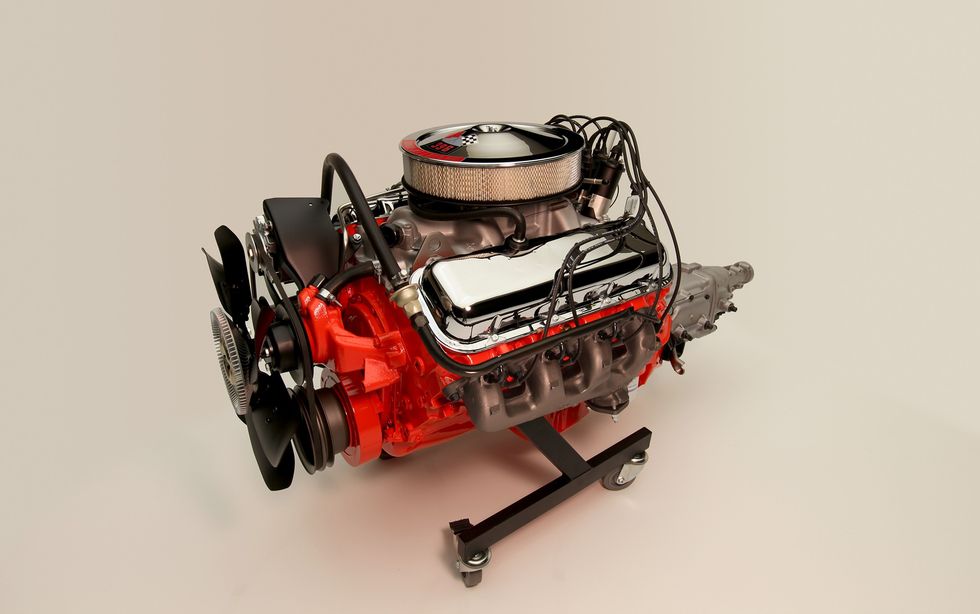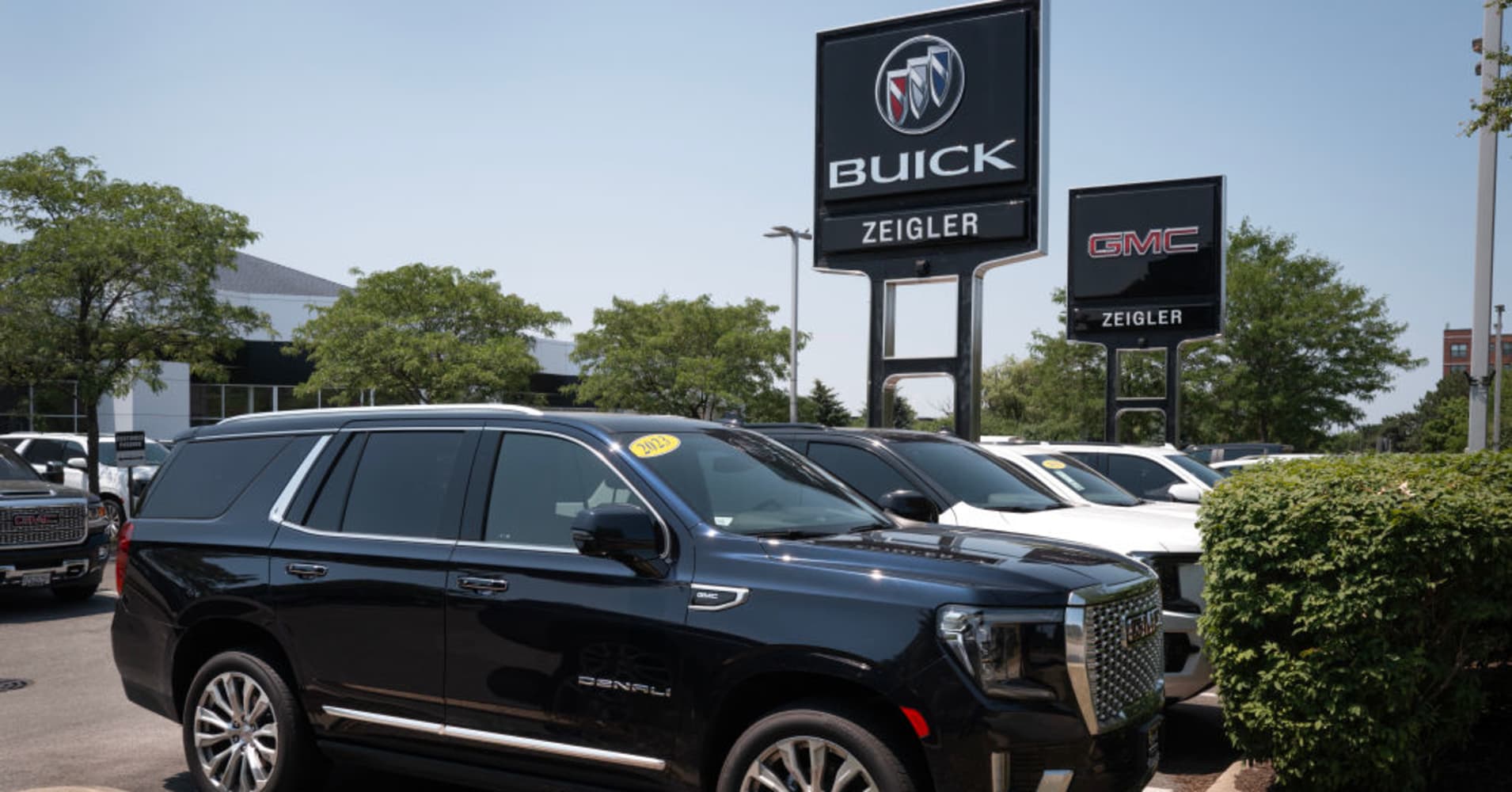
RESTORING A CHEVELLE'S 396 TO ABSOLUTE PERFECTION
"Meticulous" would be the best word to describe Jeff Lilly Restoration’s 1969 L78 375 hp 396 big-block Chevrolet engine restoration. Seeing the engine on the stand, resplendent in fresh paint and chrome, you'd think that you were on the photo shoot for promotional advertising back in the late 1960s instead of looking at the engine over fifty years later.
There was a time back in the mid-1980s when concours-quality restorations of muscle cars had everyone searching for the parts they tossed out on Day Two of a muscle car build. Today the trend of modernizing muscle cars to Pro Touring status has added some viscosity that has slowed down the muscle car restoration approach, but there are still a few purists who demand it. Jeff Lilly has been performing this kind of work for over 50 years.
You would expect nothing less than the correct block casting number for this engine. The casting date also checks out as an early build engine with the block cast in September of 1968.Photo: Jeff Lilly Restorations
“I’ve been accused of not knowing when to say when at times. The engine for this effort was missing the correct date-coded head, complete smog pump system, fan clutch, water pump, starter, and some other smaller items so some research was in order.”
Lilly’s approach to this build is much like a forensic evaluation, where all the casting numbers, casting dates, and part number stamps all have to agree in order for this piece of muscle car history to pass its DNA test.
The L78 featured an aluminum dual plane intake and a 750 cfm vacuum secondary Holley carburetor along with equally specialized vacuum lines, PCV valve and hoses, and other tiny yet important details shown here. Yes, the correct casting number and Winters casting mark are present and accounted for.Photo: Jeff Lilly Restorations
The focus of this restoration was to produce something as close to factory original as possible. The casting numbers, casting dates, component part numbers, and even the O.E. fasteners all reflect something that are very close, if not exact, to what would have rolled off the assembly line in 1969.
The story goes that Lilly had seen the vehicle this engine came in, a 1969 Chevelle, for a few years when driving by the auto parts store where the original owner worked a few miles from his shop. After several attempts to purchase the car, he eventually succeeded. But it was not completely original. The smog pump A.I.R. system had been removed, which was almost expected from just about any self-respecting performance enthusiast in 1969. Lilly also reports that one of the cylinder heads was not the right casting number because of the owner replacing it from a valve dropping during some hard runs on the streets of San Antonio over the years. The original list number Holley carburetor was also missing.
What is often not discussed in stories about the L78 is that these engines were equipped with an air injection reaction (A.I.R.) pump that pushed fresh air into the exhaust manifolds to help reduce hydrocarbon emissions. These pumps were often immediately trashed when headers were added.Photo: Jeff Lilly Restorations
All those parts had to be retrieved and Lilly admits it was an elongated process to dig up all the errant components. But the results clearly speak for themselves.
This piece is really an effort in what could be called over-restoration. The paint and detail work on this engine is near flawless and likely not representative of what was rumbling out of Detroit in the late ‘60s. But that’s okay, because as eye candy this effort is just plain fun to study.
This detail shot also includes the special tower style hose clamps used by GM in the late ’60s and early ‘70s. These clamps were not reusable so they were often pitched during early engine modifications in favor of regular screw clamps. Photo: Jeff Lilly Restorations
For our investigation into this amazing engine, we used a reference book that we often turn to when looking for reliable numerical information on Chevrolets. Alan Colvin has written a series of books entitled Chevrolet By The Numbers that are broken down into four separate titles with year spans of 1955-1959, 1960-’64, 1965-’69, and 1970-’75. Each book is anywhere from 240 to 350 pages and are packed with verified data directly from Chevrolet archives.
Our research focused on this L78 396 engine listed in the ‘65-’69 book and we would highly recommend purchasing this book from alancolvin.com if accurate information is your goal.
The right side manifold casting numbers are not only correct but include the factory heat riser valve. This valve closes when the engine was cold at idle, forcing exhaust gas across underneath the intake manifold to heat the carburetor. Photo: Jeff Lilly Restorations
The L78 was among the first high performance rectangle port big-block engines found in production Chevrolets. They first appeared in the 1965 Corvette and also in the abbreviated 201 1965 Z-16 Chevelles. By 1966, this engine evolved into a full run production powerplant with the peak horsepower output better than either the 325 or 360 (and later 350) hp versions using oval port heads and hydraulic lifter camshafts, and smaller carburetors.
The 375 hp rating came about from the use of large, rectangle intake port iron heads combined with a longer duration, mechanical flat tappet camshafts that produced the additional power compared to the oval port versions. This same package was essentially carried over through the 1969 Chevelles with only minor changes to items like intake manifold and cylinder head casting numbers that included minor changes to these parts. In Colvin’s Chevrolet By The Numbers book we found no less than four different rectangle port head castings used in the 375 hp 396 between 1965 and 1969.
This tiny clip was still on the original engine when the restoration began. These minor details like the small copper ground wires between the engine and the body are what accentuate a high quality restoration. As far as we know, this clip is not available as a restored part.Photo: Jeff Lilly Restorations
Lilly has essentially built a bridge to the past with this effort. That included making sure all of the smallest details were not overlooked. The more factory-obsessed will quickly notice that even the specific fasteners used are actual GM production survivors or closely reproduced to fulfill the illusion. We won’t pretend to understand all the nuances of the bolt head markings but many are specific to this engine and Lilly was careful to not overlook this portion of the restoration.
Earlier we mentioned the engine’s amazing paint scheme so we queried Lilly on the process. Not surprisingly, it starts with a careful cleaning and blasting of the block and heads followed by a complete wire wheeling to a shiny cast iron finish. Then Lilly uses House of Kolor KD primer because it cures quickly and he reports it is capable of withstanding up to 750 degrees F temperatures. This is far more than powder coating. Cleaned again after the primer, the castings are then treated to two coats of PPG Chevy Orange that he admits is “a little glossier” but remains true to the original Chevy orange hue. Lilly says the over-restoration process is better accepted now than in the past. Ultimately, just like any other hot rod, Lilly built this to his satisfaction rather than someone else’s “standard”.
In 1969 GM used Packard as the source for all its spark plug wires. Suppression wires used a carbon core that reduced the radio frequency interference (RFI) produced by solid core wires. Unfortunately, these proper date coded wires also produce resistance that is quite high, which reduces spark energy. The date code (3-Q-68) references the wires were built in the third quarter of 1968. Photo: Jeff Lilly Restorations
The intake manifold is another area of great concern since it is often center stage supporting the dual inlet Holley carburetor. The casting number agrees with the build date of this L78 which is important because there were a total of three different casting numbers for the L78 396 through its multi-year tenure. The manifold was carefully glass beaded clean and applied with a satin clear coat paint to protect its finish for longevity reasons.
The Holley carburetor is also wearing its proper documentation on the choke horn. The L78 engines all used one of the earliest 4150 style 780 cfm Holley carburetors. These carbs used a secondary metering block, making them a 4150 style carburetor while the small-block and lower horsepower big-blocks used a 4160 style Holley with a secondary metering plate.
The Muncie is also completely original, including the proper case casting number. During this production period, GM stamped the VIN number into the top of the transmission case to identify the transmission with the car. It requires no leap of faith to believe that this is the right transmission for this car. Photo: Jeff Lilly Restorations
With a project like this, Lilly certainly didn’t stop with just the engine. The process also continued into the drivetrain as well. As you might expect, there was a specific casting number for the 11-inch bellhousing and the Muncie four-speed also features the proper casting numbers on the case and extension housing. Chevrolet even went so far as to stamp the VIN numbers into the top of the Muncie transmission case to accurately tie in the transmission to its specific vehicle. It’s no surprise that this number matches the Chevelle’s VIN.
The effort that went into this particular restoration is clearly chart-topping but also indicative of Jeff Lilly’s efforts not just for his personal machine but also for his customers. This is not without a massive effort, but it is also unmistakably top tier. If there were awards for this kind of effort, it would certainly qualify as platinum status, mainly because a gold standard just isn’t good enough.
Specifications
1969 Chevrolet L78 396-cu.in. V-8
- Horsepower: 375 hp at 5,600 rpm
- Torque: 415 lb-ft at 3,600 rpm
- Compression: 11:1 using domed pistons
- Bore: 4.094-inches
- Stroke: 3.76-inches
- Crankshaft: Forged steel crank 5140 steel
- Connecting rods: Forged steel rods 6.135-inch length
- Cylinder heads: Cast iron, rectangle intake port
- Valve sizes: 2.19 intake / 1.72 exhaust
- Chamber size: 107cc
- Camshaft: Flat tappet, mechanical
- Intake manifold: Aluminum, dual plane
- Carburetor: Holley, 780 CFM, dual-inlet four barrel
Casting and Part Numbers for Chevrolet L78 396 (375 hp) with iron rectangle port heads
- Engine Block: 3955272
- Cylinder heads, rectangle port: 3919840
- Intake manifold, aluminum: 3933163
- Exhaust manifold, LH: 3909879
- Exhaust manifold, RH: 3916178
- Water Pump: 3931065
- Distributor: 1111499
- Carburetor 3959164 (Holley List: 4346)
- Water pump pulley: 3947824 DV
- AIR pump pulley: 3932457 DH
- Crank pulley: 3955529 AB
- Starter motor: 1108430 4A25
- Bellhousing, 11-inch: 3899621
- Muncie 4-speed case: 3925660
- Muncie extension housing: 3857584
Information
- Jeff Lilly Restorations, (210) 695-5151, JeffLilly.com
- Chevrolet By The Numbers series of books by Alvin Colvin; alancolvin.com
